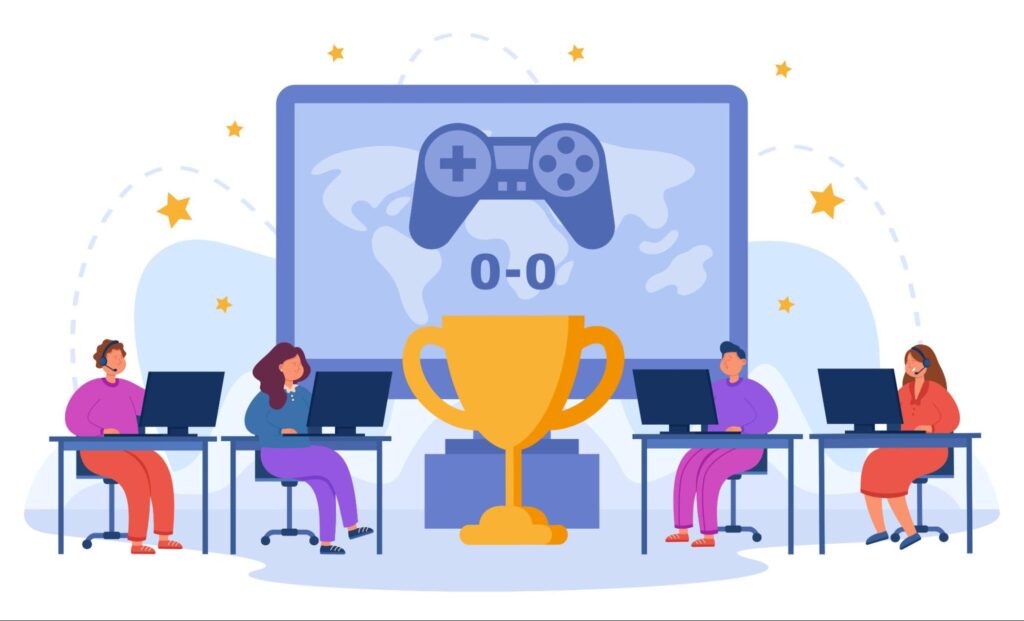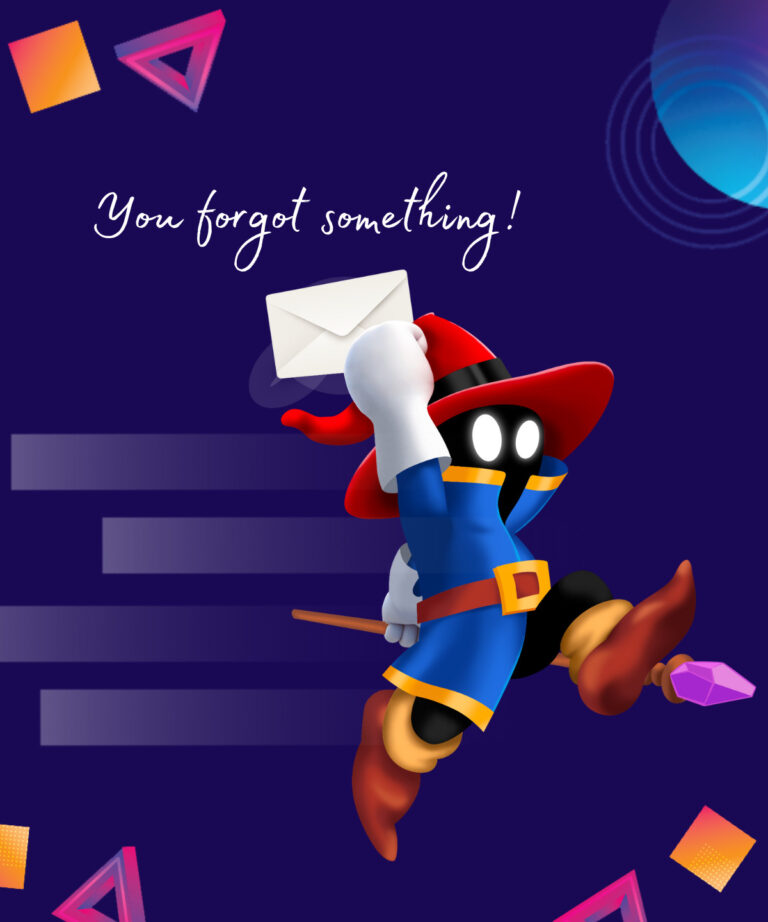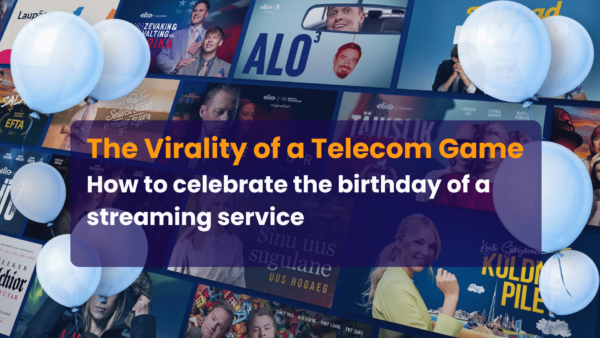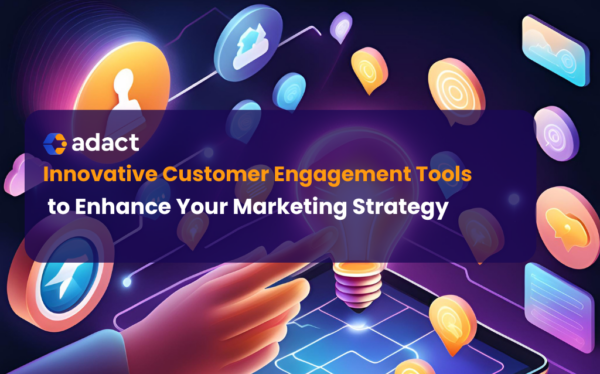Are you looking for ways to make training more enjoyable for your employees? Corporate training gamification may be the answer you’re looking for. According to research, gamification can increase employees’ intrinsic motivation and boost engagement levels at a company.
Let’s face it – traditional training courses usually make employees wish they were anywhere but there. They last for hours and feature so much information, making it hard to remember even half of it. That’s why you should add something innovative to your training strategy.
Experts predict the global gamification market will reach $96.8 billion by 2030. More and more companies are embracing this engaging way to ensure their employees pick up more information during training, and you can too.
In this article, we’ll go over corporate training gamification, its benefits, best practices and more.
What is gamification?

Image source: Inspired eLearning
Gamification in education involves adding game-like elements to learning activities to encourage participants to acquire new knowledge. To make things more exciting, gamification uses these game mechanics:
- Leaderboards
- Timers
- Badges
- Points
In a corporate setting, gamification aims to improve employee engagement and knowledge retention. If you make corporate training programs more fun and interactive with gamification software, your staff will see your commitment to their skill development.
You can leverage gamification across different areas, including gamification in HR, sales training, marketing courses, etc.
Let’s now explore the benefits of gamification in corporate training.
Benefits of corporate training gamification
An efficient gamification strategy brings so many benefits to the table. Here’s why you should leverage multiplayer trivia, Wordle and other games during your workers’ learning journey.
1. Better information retention
Long-term knowledge retention should be one of the main goals of every training program. Gamification makes the process of learning fun, which can have a positive influence on retention.
People are more likely to remember information when presented in a fun way. A UNESCO study revealed that positive emotions, such as excitement and enjoyment, have a powerful impact on learning.
2. Motivation
Gamified learning inspires employees to grow and improve their performance. According to research, there is a clear connection between gamification and employee motivation. A friendly competition encourages them to participate in employee training actively.
How does gamification in corporate training motivate learners? The method uses a reward system. Knowing that points or badges await them can encourage employees to pay attention to the learning materials and complete tasks.
3. Engagement
If you fail to captivate your employees, all your training efforts will be in vain. Properly designed gamified training can create a positive association with the learning experience, which engages users.
Gamified experiences allow employees to interact and immerse. Humans are visual beings – we respond better to information presented in images and colors. Making that information interactive strengthens our drive to engage and absorb new knowledge.
Related: Best Practices in Employee Engagement and Employee Engagement Games
4. Fun company culture
With gamification in corporate training, you can establish a fun learning culture. Thanks to gamified methods, employee learning doesn’t have to be a tedious process that drains your energy. This approach paints your company as a fantastic employer.
Corporate training gamification: Best practices

Image source: Unsplash
If you want to incorporate gamification in corporate training, here are some best practices.
1. Set clear goals
Although adding gamification elements to courses is beneficial, don’t do it if you don’t have clear goals. Training that doesn’t have a purpose will get off track and confuse employees. They won’t learn anything in the process.
Before you begin, ask yourself what the purpose of game-based learning is for your organization. For instance, you might want to:
- Engage employees
- Assess knowledge gaps
- Teach them new concepts
You can design a better training strategy with a clear goal in mind.
2. Provide feedback
Learners expect frequent and instant feedback. They don’t want to go through the learning process without knowing how successful they are. So, you shouldn’t give them feedback only when the course ends.
With gamification software, learners receive instant gratification with real-time feedback. The tool shows the correct answers immediately or updates their score in the leaderboard. That way, they know their progress and which materials they need to revise.
3. Foster healthy competition
You can foster friendly competition by:
- Using leaderboards and rankings – display individual or team scores for completing tasks frequently. That will motivate the learners to perform better. They will feel a sense of achievement whenever they see their names on the leaderboard.
- Encourage collaboration – the employees don’t have to do it alone – divide them into teams and make them compete against each other for a prize.
- Reward progress – don’t only reward top performers. It’s crucial to recognize progress and motivate employees who may not have many points to continue their learning path.
4. Offer rewards
Employees earn points when completing challenges during gamification training. Such game mechanics, however, should serve a purpose. Top performers should receive rewards for their accomplishments. For instance, you can give them company swag or gift cards.
Corporate training gamification: Examples
With solutions like Adact, you can launch gamified training. Our tool boosts user engagement and makes employees’ learning path fun. Here are the games you can incorporate into your next corporate training.
1. Gamified quiz

Quizzes are a standard part of every training. However, you can make them more interactive by adding game elements. Gamified quizzes can increase motivation to learn and provide excitement. You can assess a learner’s progress playfully.
After answering questions correctly, employees earn points displayed on the leaderboard. Competitiveness drives engagement and motivates them to understand the new material.
For instance, you can use gamification in compliance training. This topic usually requires a lot of memorization. Use gamified quizzes to reinforce key concepts and help employees retain knowledge.
2. Gamified survey

You can also apply gamification in corporate training to surveys. Let’s say you want to assess how practical or easy your in-person or online training is. Don’t send your employees tedious forms for that – use a gamified survey.
You can use a gamified survey as an ice-breaker to ask employees about their expectations of the training. Alternatively, you can leverage it post-training to gather feedback.
With Adact, you can launch gamified surveys that feature custom backgrounds in just a few minutes.
3. Leaderboard
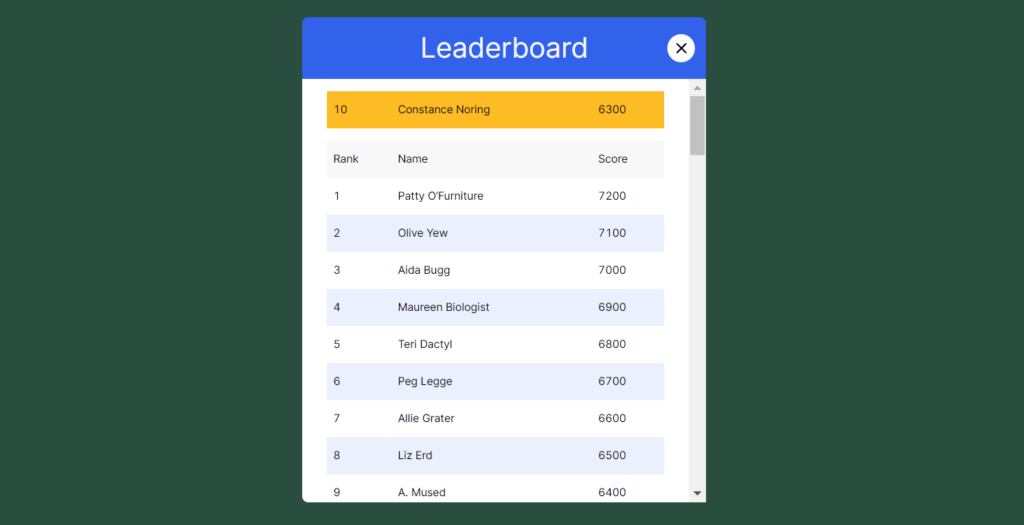
The leaderboard makes corporate learning competitive. After each game, ensure that participants see their points and ranking. That will motivate them to do better and beat their colleagues.
We at Adact know how important it is for employees to see where they stand compared to others. That’s why you can design a leaderboard using our software. You can add the title, header visuals and table.
Your employees won’t have to scroll through the entire leaderboard to find their placement. Adact displays their position separately to give them a sense of progress and encourage them to get more points.
4. Memory game
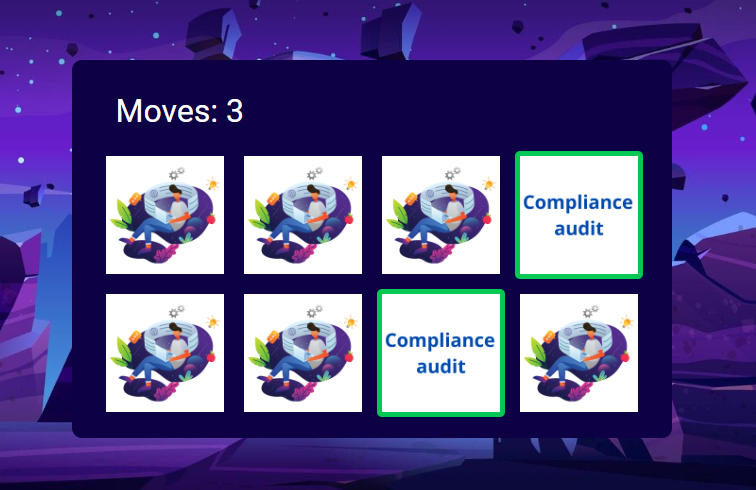
Memory games are helpful when employees have to memorize complex information, such as technical terms. If they can’t remember anything from the training, all your efforts will be in vain.
With Adact, you can launch a memory game that asks employees to match pairs. For instance, they can match images or text during a compliance course, leading to better information retention.
5. Wordle
Wordle is a word-guessing game. You can use it in corporate or leadership training to ensure employees remember complex terms. Set aside some time to determine which terms they must remember and include them in Wordle.
Adact lets you choose the words, design and feedback colors for your custom Wordle game. You can determine how many guesses participants can make at every level. That keeps employees engaged regardless of the material.
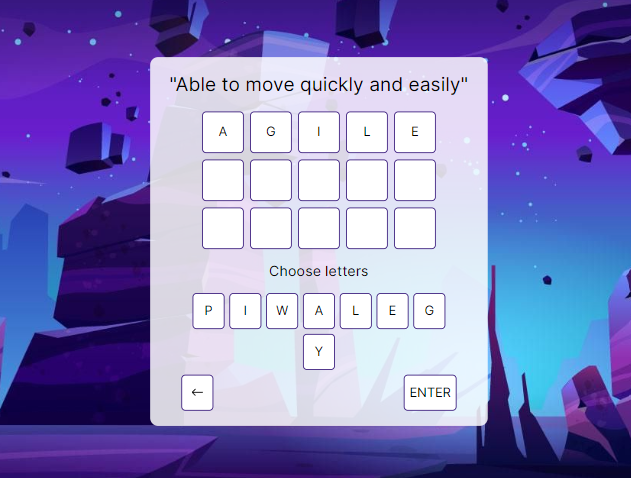
6. Video trivia
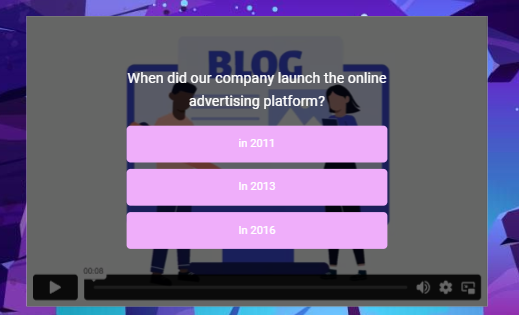
Video trivia adds an exciting twist to the traditional trivia game. It features videos that present relevant information to your employees. After a video ends, an employee should answer a question about what they have just watched.
You can use video trivia games during onboarding when a new joiner is learning more about your company and products. Don’t send them countless pages to read – create shorter videos that test their knowledge. Check out our blog post for more fun ways to onboard new team members.
Related: Work Trivia Games and How to Make a Trivia Game
Conclusion
Gamification in corporate training is on the rise, and you can get on the bandwagon. Show your workers that they can grasp even the most complex topics with fun and interactive games.
Adact is a user-friendly platform that transforms your training with gamification elements. You can use various games to make each session exciting and increase information retention. Try it now!
Corporate training gamification: FAQs
You need a platform like Adact to integrate gamification into training. With the right tool, you can launch gamified quizzes, surveys, memory games and more.
Companies use gamification in training and development to engage employees. Workers can play games to memorize technical terms, check their understanding of new concepts or share feedback.
You can make your training more interactive by asking participants to play a game. For instance, you can send them a gamified quiz. Throughout the game, they can see their progress and determine where they lack knowledge.
It’s important because it increases engagement and improves information retention. Game-like atmosphere motivates learners to participate and try to do their best.
